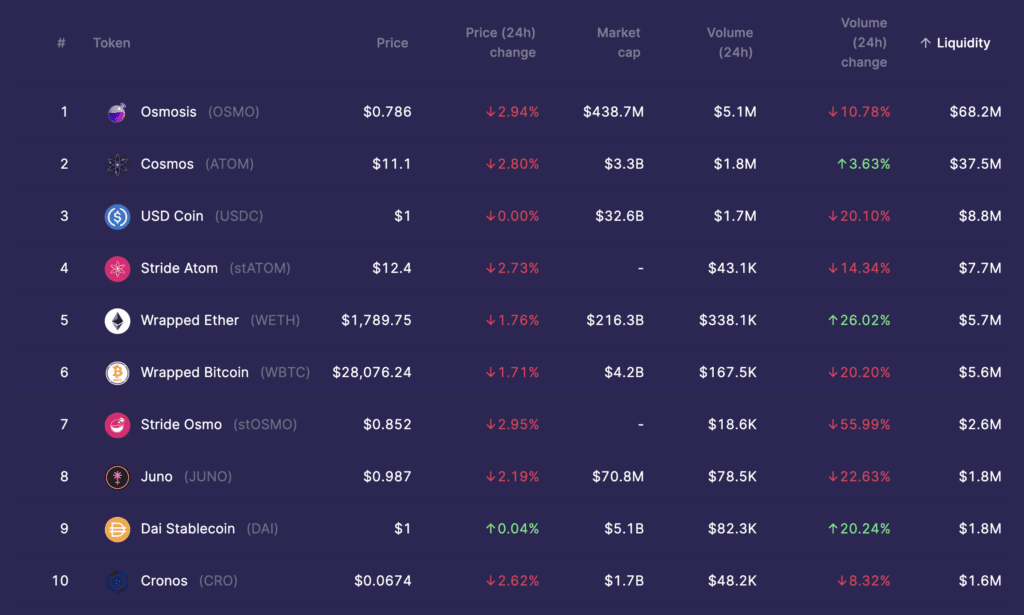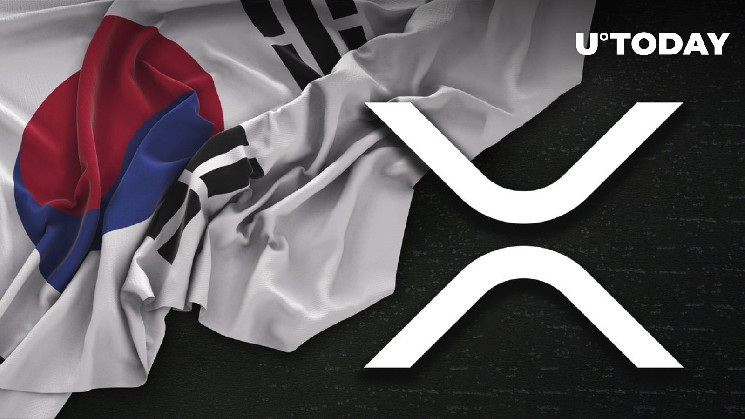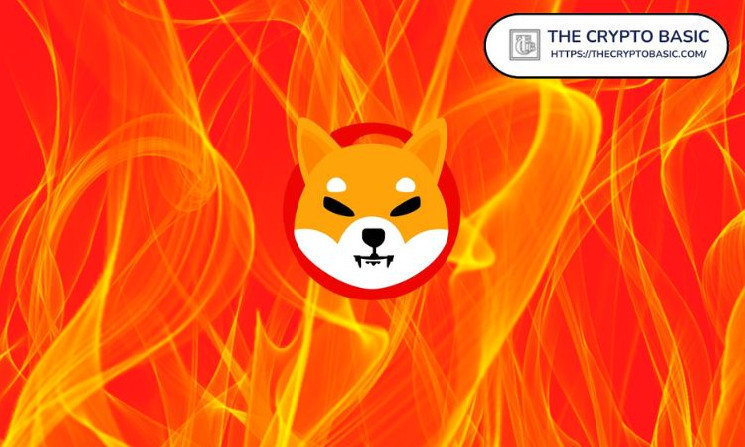Noble does not consider itself a decentralized finance (DeFi) system in the same way as Uniswap does. While these platforms do not facilitate token production, they do allow cryptocurrencies to be freely listed and traded peer-to-peer.

So what is Noble? Let’s go with Coincu to find the answer.
What is Noble?
Noble is a Cosmos application-specific blockchain designed specifically for the issuing of native assets. This means Cosmos may now issue and burn assets directly on the Appchain rather than relying on token bridges to bring non-native assets into its ecosystem.
Noble, beginning with USDC, offers the efficiency and interoperability of native assets to the larger Cosmos environment. Its mission is to be the world’s leading issuance center for digital assets that easily link to other blockchains.
It makes use of the Cosmos-SDK, a versatile toolset that enables developers to exploit current modules and effortlessly combine bespoke modules to provide nearly limitless functionality to Noble blockchain asset issuers.
Current situation
Cosmos is a network of linked blockchains that use the Tendermint Byzantine fault-tolerant consensus system, Cosmos Software Development Kit, and Application Blockchain Interface, according to the official Cosmos website.
The majority of non-native assets are not listed on the Cosmos bridge, restricting liquidity and harming Cosmonauts, according to Appchain.
New special listings for non-native asset listings draw more users and liquidity to Cosmos, according to data. Bridges must be built up by users to accommodate non-native assets, although bridges are often only effective if heavily financed. Massive transfers may cause severe slippage, and users/protocols holding bridging assets rely entirely on the security of their bridges.

This is particularly true when it comes to the liquidity of Cosmos, the native stablecoin that suffered greatly when Terra UST crashed. Non-native/bridged assets like USDC, wETH, wBTC, and DAI contain the bulk of The liquidity and operate in pools that produce the majority of the fees. Nevertheless, the issuers of these assets do not have a convenient mechanism to deploy them natively on Cosmos.
Noble’s issue-specific blockchain transformed Cosmos’ dependency on bridge liquidity. Tokens issued on the platform can be smoothly transferred throughout the IBC ecosystem, and protocols and corporations may simply install their tokens on Noble using a common infrastructure known to all blockchain developers.
The project hopes to encourage token issuances to transfer liquidity from other layer-1 ecosystems by acting as their token factory. The initiative thinks that by remaining neutral in the ecosystem, it will be able to deliver something that everyone can support.
As part of its new Interchain Security (ICS) effort, the Cosmos Hub, the primary validator set of the Cosmos mainnet, now enables upstart networks to borrow its validators for a charge.
A genuinely safe blockchain network should have a demonstrably decentralized validator set, which consumer chains may find difficult to implement. ICS is designed to aid in this process, allowing more entrepreneurs to create their own chains on Cosmos.
The mainnet will debut as a proof of authority chain with a permission set of validators, all of which are also Cosmos Hub validators, but it will run ICS once the software can be evaluated for cutting.
Its infrastructure allows asset issuers total control, allowing firms like Circle and Tether to continue operating as normal. Noble’s gateway will significantly increase IBC’s local liquidity, particularly for stablecoins.
The Appchain provides an extremely simple way for any sort of issuer, including institutions wishing to issue Real World Assets (RWA). Noble’s participation in the enterprise’s adoption of Cosmos seems to be unavoidable.
Noble design
In terms of asset issuance capability, the Noble app-chain adheres to industry-standard smart contracting capabilities. This capability enables different organizations to mint and burn tokens, as well as freeze and blacklist addresses on the chain.
Among the key authorities are:
Owner: The asset issuer will have the Owner position, which has the authority to reassign all roles.
Minter: The Owner has the right to add/remove Minters, who may mint and burn tokens on the chain.
Blacklist: Addresses may be blacklisted at the discretion of the asset issuer. A blacklisted address will not be able to move tokens outside of the Noble chain through IBC, nor will it be able to authorize, mint, or burn tokens.
How does it work?
How does it work?
Noble’s initial plans for go-to-market included leveraging Replicated Security (also known as “Interchain Security”) – the Cosmos Hub’s shared security model. This feature allows validators to secure app-chains using the value of ATOMs staked by Cosmos Hub delegators. However, due to uncertainty about the design of replicated security, the project has paused integration with Replicated Security.
Gas costs may be paid using any Cosmos asset, including Noble assets. Since USDC is the first token to be released, it will serve as the primary gas token until other assets are deployed on Noble.
Fees gathered by the chain in USDC and other assets on a block-by-block basis will provide economic stability. If the chain detects a double sign, the validator address will be “tombstoned,” which means that their tokens and address will no longer be valid, resulting in the loss of any future fee money. The Proof of Authority concept assigns a real economic penalty to erroneous validator behavior, providing economic security to the network that can be calculated in real time based on previous and expected fees.
Noble plans to monitor advancements in shared security throughout the blockchain ecosystem to assure the security model’s optimality.
Noble will employ the Proof of Authority (PoA) consensus process at the same time. Several reliable Hub validators were selected for the PoA validator suite to make PoA the greatest solution before ICS. Validators who commit fraud will be permanently removed from the Noble validator suite. A Cosmos community-organized 5/7 multisig will also be able to send changes to the chain.
Noble provides a tokenfactory module design in Cosmos to facilitate the minting of generic assets. Moreover, tokenfactory modules are the exclusive responsibility of asset issuers and are different from Noble chain governance. Moreover, each tokenfactory module is unique in that it has unique access controls with ownership over the minting and burning of a certain asset.
Noble allows the issuance of both crypto assets and RWA. Noble is the first infrastructure developed exclusively for the issuing of generalized assets, which may pique the attention of institutions such as banks.
USDC Solution
According to a blog post from the Noble development team, USD Coin (USDC) will soon be available in the Cosmos environment through the Noble network.
The USDC will be the first fiat-backed stablecoin that is extremely liquid and completely collateralized on a Cosmos Inter-Blockchain Communication Protocol-connected network, according to the Noble team.
They claim that the launch of the USDC stablecoin would solve many of the problems that Cosmos users are now experiencing when attempting to move assets from one network to another.
In the next months, the Noble team anticipates that this integration will produce hundreds of millions of dollars in liquidity in the Cosmos ecosystem. Noble seeks to supply every blockchain with a canonical and fungible version of USDC, meeting a crucial demand in the ecosystem.
The Cosmos ecosystem’s different networks are linked through the Inter-Blockchain Communication Protocol (IBC), which allows assets to be transferred across networks. Noble is one of the more than 50 networks that comprise the Cosmos IBC ecosystem.

Conclusion
Noble’s global asset issuance chain is a significant step forward for the Cosmos ecosystem. Noble brings the advantage of increased IBC native liquidity to cosmonauts on each Appchain.
USDC, the first native, fiat-backed stablecoin to be launched on the Noble network inside the Cosmos ecosystem, will be extremely liquid and completely collateralized on a Cosmos IBC-connected network. This introduction is intended to address the issues that users have when trying to bridge assets from one network to another.
DISCLAIMER: The Information on this website is provided as general market commentary and does not constitute investment advice. We encourage you to do your own research before investing.






